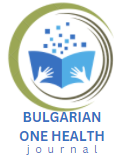Summary
Mercury (Hg) is a metal that is released into the environment from both natural and anthropogenic sources. After entering the environment, it undergoes complex transformations and cycles between the atmosphere, land and water systems. During this biogeochemical cycle, humans, plants and animals are exposed to it, and this potentially leads to various health risks for living organisms. (EFSA CONTAM Panel, 2008) Methylmercury is mostly concentrated in the aquatic food chain, making populations with a high intake of fish and seafood particularly vulnerable (COMMUNITIES, Brussels, 28.01.2005).
In the context of this danger, methylmercury exposure assessment, taking into account the national traditions and nutritional characteristics of each country, plays an important role in the prevention and control of this contaminant.
The Risk assessment center on food chain has assessed the dietary exposure to methylmercury of the Bulgarian population, using data from 221 samples for the presence of total mercury in food, analyzed in the process of implementing the national monitoring program for the control of contaminants in food. The assessment includes data from two periods – from 2009 to 2018 and from 2019 to 2023, provided by the Bulgarian Food Safety Agency.
Of the foods tested for the first period, nearly 20% had mercury levels below the limits of quantification (LOQ). The mean mercury levels ranged between 0.0013 mg/kg for the Salmon and Trout group and 0.0089 mg/kg for the cumin seed related to the most favorable (LB) scenario and 0.016 mg/kg for the fish and other seafood (including amphibians, reptiles, snails and insects) up to 0.091 mg/kg for cumin seeds referring to the worst case scenario (UB). For the second period, from 2019 to 2023, all values for the presence of total mercury are below the limit of quantification. For all food groups, methylmercury levels were zero for the LB scenario and 0.0021 mg/kg (LOQ) for the UB scenario.
Freshwater fish, marine fish and diadromous fish are important contributors to the dietary intake of methylmercury in the various food categories.
For the period 2009 – 2018, the average dietary methylmercury exposure ranged from a minimum of 0 μg/kg body weight per week up to a maximum of 0.903 μg/kg body weight per week, for the 18-65 age group.
For the period 2019 – 2023, the average exposure to methylmercury in food ranges from 0 μg/kg body weight per week up to a maximum of 0.087 μg/kg body weight per week in children from 1 to 3 years.
Chronic dietary exposure to methylmercury did not exceed and was significantly below the reference value of 1.3 µg/kg bw per week, for all age groups and for all food categories, for both assessment periods.


